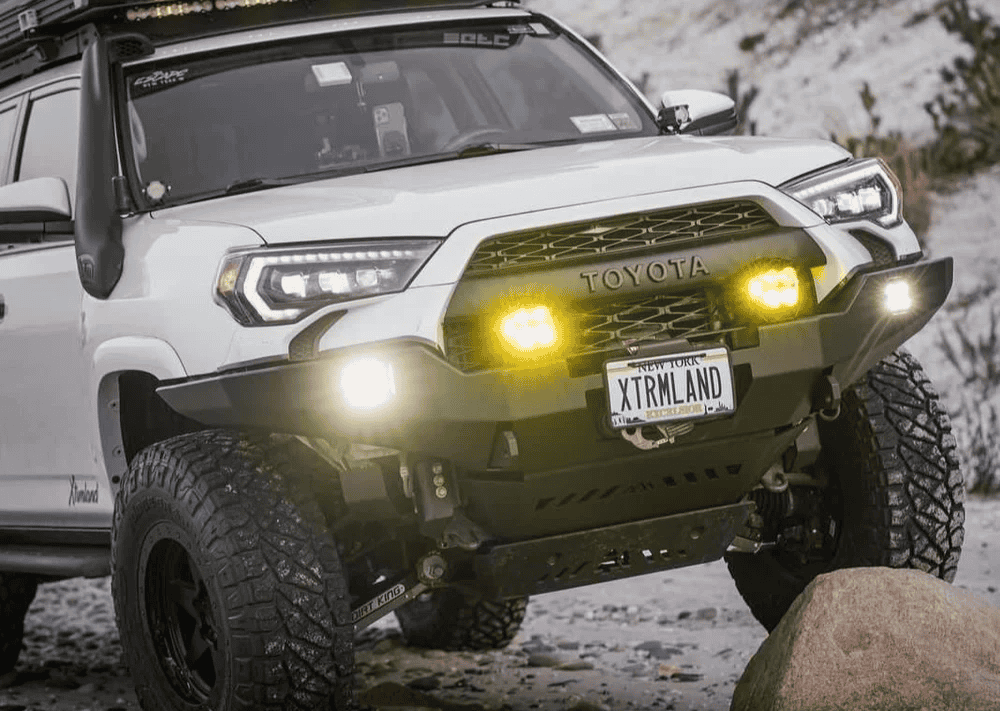Overland Vehicles

Building for true distance is more than a big tank or a large battery. Long range is the sum of fuel or energy autonomy, water capacity, food storage, tire and suspension durability, and the ability to navigate and communicate when plans change. Every choice affects range, from tire size to roof load to how you cook your meals. Start by defining your route style, climate, terrain, and resupply cadence, then choose systems that match those realities.
Realistic range is built on consumption, not ideal numbers. Track average fuel or energy use under loaded conditions on mixed surfaces. Gas and diesel builds should calculate range after adding all gear and larger tires. Electric platforms should model daily energy budget that includes driving, camp loads, and climate control. Add a safety buffer so wind, sand, cold, or headlight use does not strand you.
For combustion builds, dual batteries with a smart isolator or DC to DC charger keep house loads from draining the starter. For electric camp systems, lithium iron phosphate packs around four to six hundred amp hours support fridges, induction, lights, and ventilation for several days. Combine roof solar in the three to six hundred watt range with alternator or DC charging to recover energy while moving. Keep cables short and sized correctly to minimize voltage drop.
Aim for three to six gallons per person per day for desert travel and two to three gallons in temperate zones. A fixed tank mounted low and central manages weight better than loose jugs. Add filtration at the fill and a secondary filter at the tap. Dry staples, shelf stable proteins, and a fridge that holds steady on washboard roads extend time away from town. Separate clean and gray tanks simplify hygiene.
If power and water keep you camped, durability keeps you moving. Choose components that survive corrugations, heat, and mud, then mount them where weight distribution stays neutral. Poor balance shortens range and punishes parts.
Match spring rate and shocks to your finished weight, not an empty vehicle. All terrain tires with correct load rating and tough sidewalls are range multipliers because fewer punctures mean fewer detours. Air down for washboard and sand, then air up with a quality compressor to preserve tread and fuel economy. Pack heavy items between the axles and as low as possible to calm the chassis and reduce driver fatigue.
Choose gearing that restores usable torque after larger tires. Lockers or limited slip differentials help momentum without wheelspin, which saves fuel and parts. Skid plates and rock sliders protect critical components so a minor scrape does not become a trail ender. A front recovery point, rear recovery point, and a reliable winch form the backbone of self recovery.
Carry a spares kit tailored to your platform: belts, hoses, fluids, fuses, tire repair, and tools you know how to use. Design with access in mind so filters, pumps, and fuses are reachable without tearing the interior apart. Label electrical circuits and keep a printed schematic in the glove box.
Navigation and communication make distance feel shorter. They turn uncertain miles into measured steps and provide an exit plan when the weather or terrain refuses to cooperate.
Use layered maps: vector topo for big picture, satellite imagery for surface reading, and paper maps as a non electronic fallback. Preload tracks and waypoints before you lose signal. A dash mount that keeps devices steady and visible reduces errors and eyes off the road.
Combine a cell booster with satellite messaging for two way check ins, location sharing, and SOS outside coverage. In party caravans, handheld radios simplify convoy spacing and obstacle spotting. Keep an eye on wind and precipitation forecasts that impact sand, river crossings, and high passes.
Insulation keeps batteries happier and sleep deeper. Ventilation prevents condensation and helps in humid climates. In cold seasons, a sip fuel heater paired with a carbon monoxide detector gives steady warmth. In summer, shade strategy, reflective window covers, and efficient fans extend your stay without draining the battery bank.
When it is time to turn a checklist into hardware, choose a team that understands range math, weight balance, and serviceability. Explore overland rig options and platform ideas on our page for overland rigs. If you need a tailored system built around your routes, see our approach to custom overland upfit. Curious how collaboration and handoff work from first consult to trail ready delivery, visit why choose OZK Customs.
You know how far you want to go. We know how to engineer the power, water, suspension, and communications that make those miles possible. Share your route style, passenger count, and range target. Our team will spec the right systems, fabricate what does not exist, and hand you a rig that feels intuitive from the first mile.
Ready to translate your plan into a dialed build that performs far from pavement? OZK Customs designs and upfits overland rigs with proven power systems, water storage, suspension, and communications. Tell us your route, range goals, and must haves—we will map a build that fits your travel style and deliver it with white glove handoff in Fayetteville, Arkansas.
ADDRESS:
6159 E Huntsville Rd, Fayetteville, AR 72701
PHONE:
(479) 326-9200
EMAIL:
info@ozkvans.com